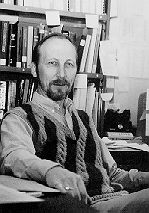
(i) It sheds light on the relation between the hadronic phenomena and the underlying fundamental interaction among quarks, which are the basic building blocks of hadrons.
(ii) The understanding of many astrophysical phenomena depends on our knowledge of relevant nuclear reactions.
(iii) The experimental studies of the fundamental processes (e.g., neutrino oscillation experiments) require input from hadron and nuclear physics for their accurate interpretations.
Currently, a main thrust of our research is directed to the application of an effective field theory (known as chiral perturbation theory) to nuclear systems with the view to give accurate predictions of observables (cross sections) for various hadronic, electromagnetic and weak-interaction processes, in particular for those which are relevant to astrophysics and/or neutrino oscillation experiments. Guided by the chiral symmetry requirements of strong interaction, we are investigating when and how effective meson degrees of freedom of the nucleus (for example, exchange currents) can influence the observables.
During a supernova explosion nuclear matter is compressed to high densities (tightly packed protons and neutrons). Since nucleons consist of confined quarks, a question of importance at high nuclear densities is how and under what conditions quark degrees of freedom affect nuclear observables. A further question we investigate is how neutrinos contribute to the supernova explosion.
Antimatter interactions with matter is a violent process. The annihilation of matter and antimatter converts mass to energy and is closely connected to the quark and antiquark structure of the nucleon and antinucleon. Once laboratories in Germany (GSI) and Japan (JPARC) have intense anti-proton beams, we will consider a renewed investigation of the annihilation process making use of phenomenological quark models.
For further information see Nuclear Theory or Experimental Nuclear Physics. or Publications
"PHYS 501, Quantum Physics I."
"PHYS 502, Quantum Physics II."
PHYSICS 212 (Last time: Fall 2013) Syllabus
"Introduction to Modern Physics, PHYS 307."(Last: Spring 2013)
"PHYSICS 503 Mechanics."(Last: Fall 2010)
"Physics 703 and 704, Electromagnetic Theory I and II."(Last: AY 2003-2004)
Research Associate 1973-75, Swiss
Institute Nuclear Physics (PSI), Villigen, Switzerland;
Senior Fellow
1975-77, CERN, Geneva, Switzerland;
Assistant Professor: 1977-81, NORDITA, Copenhagen,
Denmark;
Associate Professor: 1981-84, Univ. South
Carolina;
Professor:
1984-present, Univ. South Carolina.
Sabbatical leave: (Acad.Year
1988/1989) at M.I.T., Cambridge, MA; USA
Visiting Professor:
(April-August 1994)
at NORDITA, Copenhagen, Denmark.
(July -Sept. 2004)
at HISKP, Univ. Bonn,
Germany.
(Aug - Dec. 2012)
at CSSM, Univ. Adelaide,
Australia.
"Effective field theory calculations of NN --> NN π"
V. Baru, C. Hanhart and F. Myhrer, Int. J. Mod. Phys. E 23, 1430004 (2014).
"Understanding the proton's spin structure"
F. Myhrer and A.W. Thomas, J. Phys. G 37, 023101 (2010).
"Low Energy Antiproton Physics,"
C. Amsler and F. Myhrer, Annual Review of Nuclear Particle Science 41,
219 (1991).
"The Nucleon-Nucleon Force and the Quark Degrees of Freedom,"
F. Myhrer and J. Wroldsen, Review of Modern Physics, 60,
629 (1988).
"The Chiral Quark Bag; Properties and Spectroscopy of Baryons and the Nuclear Force",
F. Myhrer, in Quarks and Nuclei,
Int. Review Nucl. Phys. Vol.1,
ed. W. Weise (World Scientific Publ. Co., Singapore) pp.325-407 (1984).
Some Publications:
I can be reached via email at myhrer@physics.sc.edu. Return to:Physics & Astronomy Homepage.